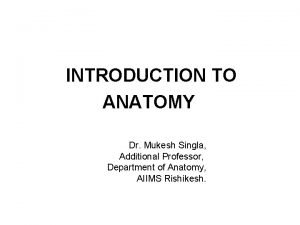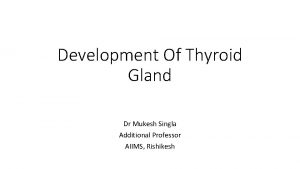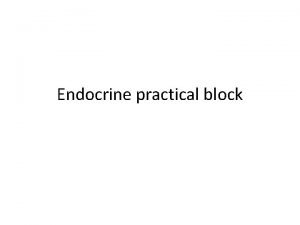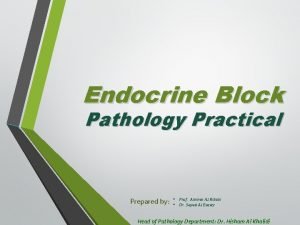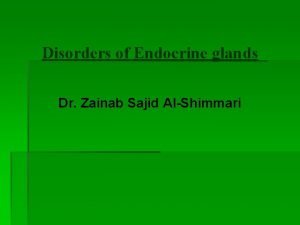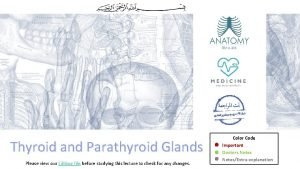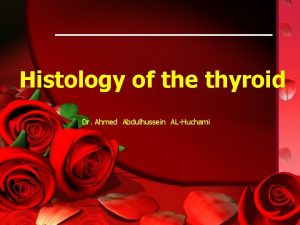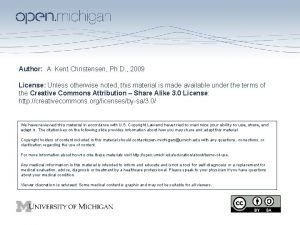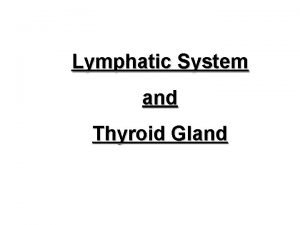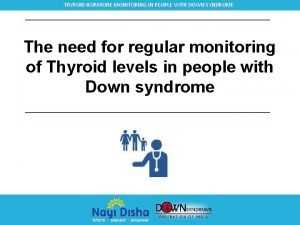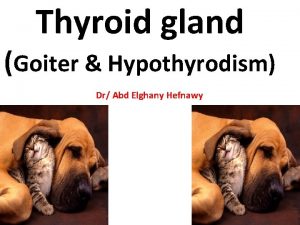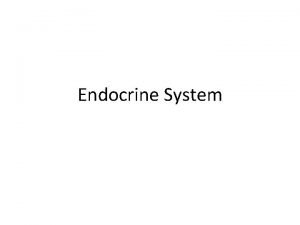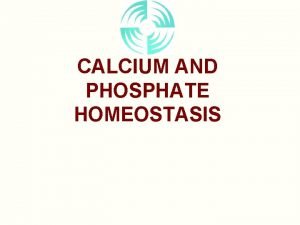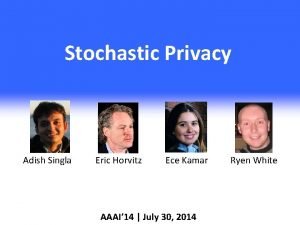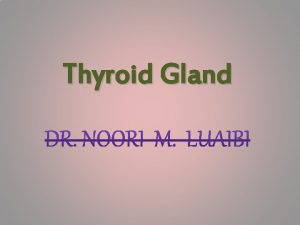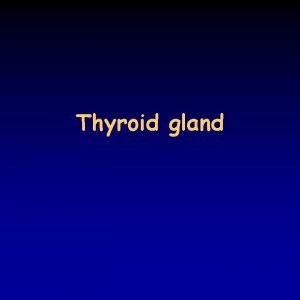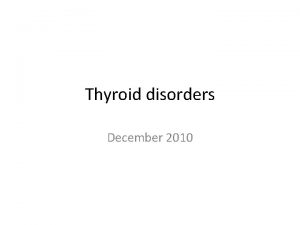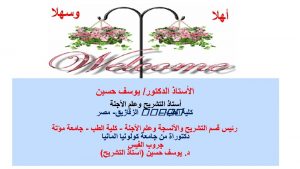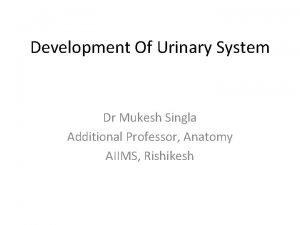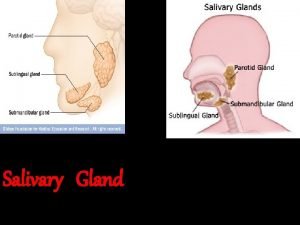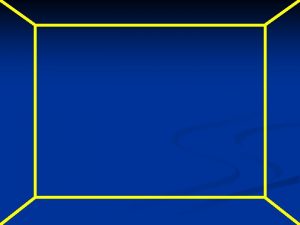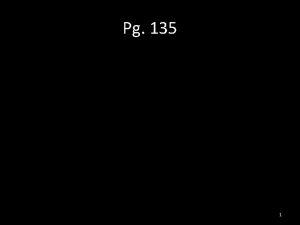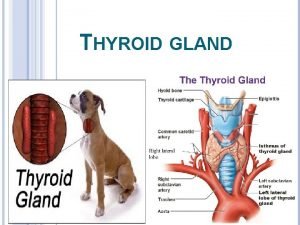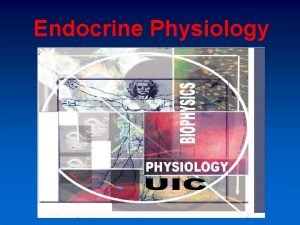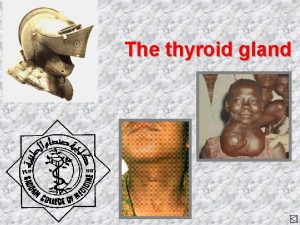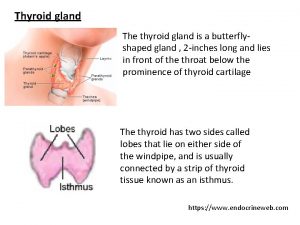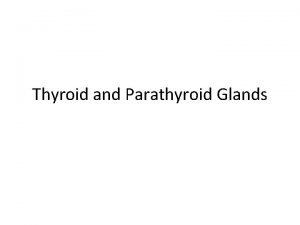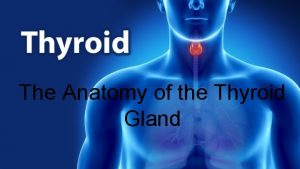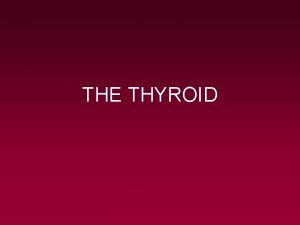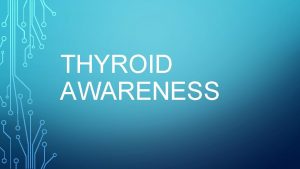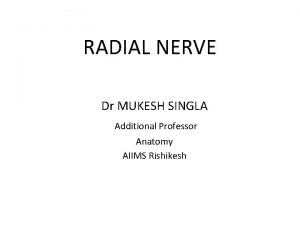Development Of Thyroid Gland Dr Mukesh Singla Additional
























- Slides: 24

Development Of Thyroid Gland Dr Mukesh Singla Additional Professor AIIMS, Rishikesh


THYROID GLAND DEVELOPMENT • The thyroid gland is the first of the body's endocrine glands to develop, on approximately the 24 th day of gestation • It begins its development from a median endodermal thickening in the floor of the primitive pharynx just caudal to the future site of the tuberculum impar




Descent of the Thyroid Gland • Thickening forms a downgrowth, thyroid diverticulum, which grows into the underlying mesoderm, and as the embryo elongates and the tongue grows, the diverticulum descends in front of the neck and pharyngeal gut • The diverticulum is connected to the tongue by a narrow canal, the thyroglossal duct, which opens in the tongue via the foramen cecum, which persists as a vestigial pit on the tongue


. . Cont • Diverticulum grows rapidly and forms 2 lobes • By week 7 of embryonic development, it reaches anterior to the trachea, having acquired a small median isthmus and 2 lateral lobes. By then, the thyroglossal duct usually has disappeared • A pyramidal lobe of the thyroid may be observed in as many as 50% of patients. This lobe represents a persistence of the inferior end of the thyroglossal duct that has failed to obliterate.




• THE THYROID GLAND begins to function at about the end of month 3, at which time, the first follicles containing colloid can be seen • AT FIRST, THE THYROID PRIMORDIUM is made up of a solid mass of entodermal cells

• It later breaks up into a network of epithelial cords or plates by invasion of the surrounding mesenchyme • By week 10, the cords have divided into small cellular groups, and a lumen forms in each cellular cluster. The cells then arrange themselves in a single layer around the lumen • During week 11, colloid is seen in these follicle structures, and even thyroxine can be demonstrated



REMNANTS OF THE THYROGLOSSAL DUCT • The normal remains of the thyroglossal duct are the vestigial foramen cecum (of the tongue) and the functional pyramidal lobe of the thyroid gland

Congenital malformations • THYROGLOSSAL DUCT CYSTS AND SINUSES • Cysts can form anywhere along the course of the developing thyroglossal duct during descent of the developing thyroid gland from the tongue • Remnants of the duct may persist and give rise to cysts in the tongue or in the midline of the neck, usually below the hyoid bone




ACCESSORY THYROID TISSUE • Very rarely the thyroid fails to descend from the tongue area resulting in a lingual thyroid • Incomplete descent, which is rare, may result in a cervical thyroid that is seen in the neck at or just below the hyoid bone • Accessory thyroid tissue often is fully functional, originates from remnants of the thyroglossal duct, thus can be found anywhere from the level of the tongue to where thyroid gland comes to rest in the neck

Ectopic Thyroid tissue and Agenesis • Found in thorax in relation to trachea and bronchi or even oesophagus • Believed to arise from endodermal cells displaced during formation of laryngotracheal tube. • Agenesis of the Thyroid • Failure of development of thyroid gland may also occur

Thankyou
 Subdivision of anatomy
Subdivision of anatomy Tongue development
Tongue development Follicular adenoma
Follicular adenoma Cushing syndrome
Cushing syndrome Enlarged thyroid gland
Enlarged thyroid gland Thyrooid
Thyrooid Nerve supply of parathyroid gland
Nerve supply of parathyroid gland Principal cells location
Principal cells location Follicular cells of thyroid gland
Follicular cells of thyroid gland Thyroid gland
Thyroid gland Hypothyroidism dwarfism
Hypothyroidism dwarfism Pituitary hormones and their targets
Pituitary hormones and their targets Spleen
Spleen Psammoma bodies
Psammoma bodies Pituitary gland thyroid
Pituitary gland thyroid Thyroid what does it do
Thyroid what does it do Hypercholestr
Hypercholestr Thyroid enlargement
Thyroid enlargement Four oval masses on posterior thyroid gland
Four oval masses on posterior thyroid gland Parag singla
Parag singla Adish singla
Adish singla Adbuctive
Adbuctive Pituitary gland and pineal gland spiritual
Pituitary gland and pineal gland spiritual Thyoid gland
Thyoid gland Learn automation interview questions
Learn automation interview questions
